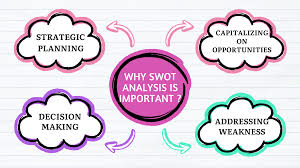As a small business owner, one of the most significant challenges you’ll face is hiring and managing employees. Finding the right talent, fostering a positive work environment, and ensuring productivity can be overwhelming. Are you struggling with employee management? You’re not alone. Many entrepreneurs grapple with these issues, but with the right strategies, you can build a high-performing team that drives your business success. At Ambrosino Coaching, we specialize in helping business owners develop effective hiring and management practices. In this blog, we’ll explore key strategies to navigate the challenges of hiring and managing employees, setting you up for long-term success.
Defining Clear Job Roles and Responsibilities
Before you begin the hiring process, it’s crucial to define clear job roles and responsibilities. This clarity ensures that you attract the right candidates and set clear expectations from the start. Begin by outlining the specific duties and responsibilities for each position, along with the skills and qualifications required. Creating detailed job descriptions helps streamline the hiring process and ensures that candidates understand what is expected of them. Clear job roles also facilitate better performance management, as employees will have a concrete understanding of their responsibilities and how they contribute to the overall business goals.
Implementing a Structured Hiring Process
A structured hiring process is essential for finding the best talent. Start by developing a recruitment plan that outlines the steps involved in the hiring process, from sourcing candidates to conducting interviews and making offers. This plan should include criteria for evaluating candidates to ensure consistency and fairness. Use multiple channels to source candidates, such as job boards, social media, and employee referrals. Structured interviews with standardized questions can help you assess candidates more effectively. By implementing a structured hiring process, you can improve the quality of your hires and reduce the time and cost associated with recruitment.
Onboarding and Training New Employees
Onboarding is a critical step in integrating new employees into your business. A comprehensive onboarding program helps new hires understand their roles, the company culture, and the expectations. Start by providing a thorough orientation that covers the company’s mission, values, and goals. Investing in training ensures that new employees have the skills and knowledge needed to perform their jobs effectively. Tailor the training to each role and include both technical skills and soft skills. Effective onboarding and training programs can improve employee retention and productivity, setting the foundation for long-term success.
Fostering a Positive Work Environment
A positive work environment is essential for employee satisfaction and productivity. Create a workplace culture that promotes collaboration, respect, and open communication. Encourage feedback and listen to your employees’ concerns and suggestions. Recognize and reward employees for their hard work and achievements. Simple gestures of appreciation can go a long way in boosting morale and fostering a sense of belonging. By creating a positive work environment, you can enhance employee engagement and reduce turnover.
Effective Performance Management
Performance management is a continuous process that involves setting goals, providing feedback, and evaluating employee performance. Establish clear performance metrics and regularly review them with your employees. This ensures that they understand their progress and areas for improvement. Conduct regular performance reviews and provide constructive feedback. Celebrate successes and address any performance issues promptly. Effective performance management helps employees stay aligned with business goals and fosters a culture of continuous improvement.
Handling Employee Conflicts
Conflicts are inevitable in any workplace, but how you handle them can significantly impact your team’s dynamics. Address conflicts promptly and fairly to prevent them from escalating. Encourage open communication and provide a safe space for employees to voice their concerns. Use conflict resolution techniques such as active listening, mediation, and finding common ground. By addressing conflicts effectively, you can maintain a harmonious work environment and ensure that employees remain focused on their tasks and goals.
Promoting Professional Development
Investing in your employees’ professional development benefits both your team and your business. Offer opportunities for continuous learning, such as workshops, training programs, and conferences. Encourage employees to set career goals and support them in achieving these objectives. Providing opportunities for growth and development not only enhances employees’ skills but also increases their job satisfaction and loyalty. A focus on professional development shows your commitment to your employees’ success, which in turn fosters a more motivated and capable workforce.
Hiring and managing employees can be challenging, but with the right strategies, you can build a strong and effective team. By defining clear job roles, implementing a structured hiring process, fostering a positive work environment, and promoting professional development, you set the stage for long-term success. At Ambrosino Coaching, we’re here to support you in navigating these challenges and developing practices that drive your business forward. Embrace these strategies, and watch your team—and your business—thrive.




0 Comments